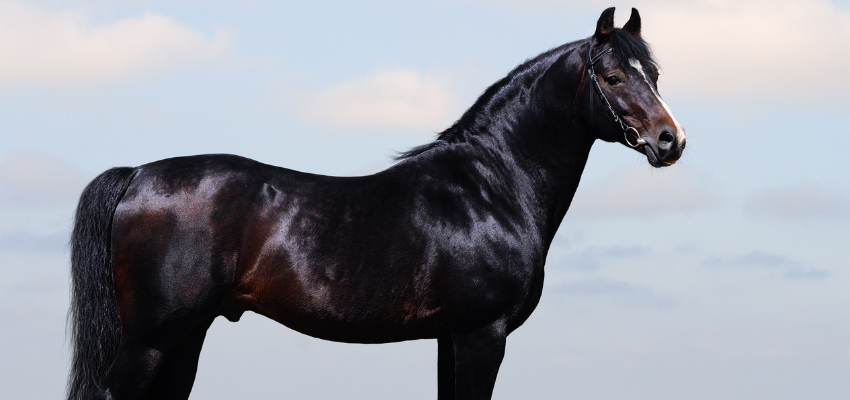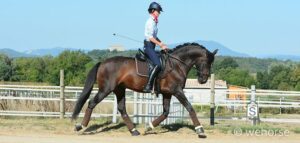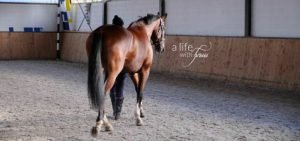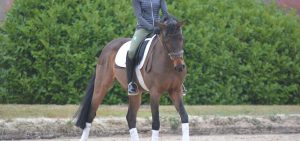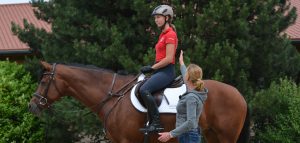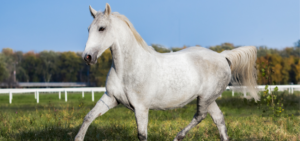The Trakehner is among the world’s oldest horse breeds. It captivates with its elegant appearance, its unique temperament, and its talent as a sport horse. In this article, we summarized everything important about the Trakehner, from its origin, appearance, and character, to breed-specific diseases, care, and suitable disciplines. Enjoy reading!
The Trakehner at a glance
This profile provides all the important information for you:
| Characteristics | Details |
| Stock height | 160 – 170 cm |
| Weight | 500 – 700 kg |
| Life expectancy | 25 – 30 years |
| Coat Colors | All coat colors |
| Temperament | Intelligent, sensitive, energetic, brave |
| Gaits | Walk, trot, canter Expansive, powerful, spirited |
| Suited for | Eventing, endurance riding, dressage, show jumping, harness racing |
History and origin
The Trakehner is one of the oldest horse breeds in the world. It originally comes from Trakehnen in former East Prussia, which is where the name comes from. Trakehnen is now in present-day Russia. The beginnings of its breeding can be traced back to the 13th century, during the time of the Teutonic Knights. They bred horses for the military.
In 1732, Prussian King Frederick William I founded the main Trakehnen stud. His initial goal was to breed enduring carriage horses. Over time, the demand for fast, agile, and robust military horses increased. As a result, Arabians and English thoroughbreds were crossbred.
The two World Wars heavily impacted the breeding of the Trakehner. Breeding resumed again after the 2nd World War, and the breed quickly gained popularity.
What does a Trakehner look like?
Trakehners are distinguished by specific physical features:
Physique
Trakehners are muscular and elegantly built. It has a medium-length strong back, a sloped shoulder, a deep chest, a well-muscled hindquarter, a long neck, and long, slender legs with strong joints. The head has a straight to slightly concave profile and large, expressive eyes. A distinctive feature of the Trakehner is its pronounced tendons. This physique allows the Trakehner a high degree of speed, power, and endurance.
Coat & colors
A Trakehner’s coat can come in a variety of colors. Chestnuts, bays, and blacks are the most common. The mane and tail of this horse breed are often quite fine.
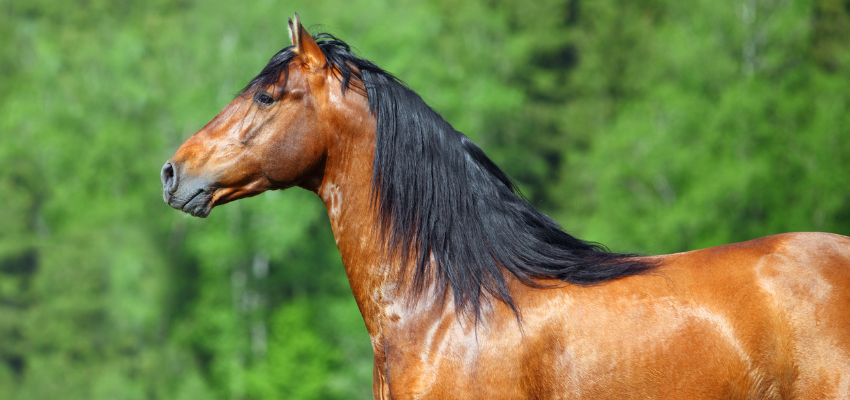
Character and temperament
The Trakehner is known for its elegant and sporty appearance, unique personality, and temperament. It has the following traits:
- Intelligence: Trakehners are highly intelligent. They’re clever, attentive, quick to understand, and remain focused during work.
- Sensitivity: They can be very sensitive and can react very delicately to their surroundings and environment. This character trait requires gentle, patient, and understanding handling.
- Energy: A Trakehner is naturally quite energetic and spirited. It is known for enthusiasm for movement and high motivation during training. Trakehners like to be challenged both mentally and physically.
- Courage: Trakehners are brave and curious. It’s willing to face unknown situations and accept new challenges.
Is a Trakehner suitable for children and beginners?
The Trakehner is a sensitive, spirited, and energetic horse breed that has specific demands on its rider. Because of these characteristics, it is not necessarily suitable for children and beginners.
Life expectancy & breed-specific diseases of the Trakehner
The average life expectancy of a Trakehner is between 25 and 30 years. Due to its long-standing breeding history, Trakehners, like all other horse breeds, can be prone to certain breed-specific diseases. These include:
Mud Fever
Mud fever is a skin disease that appears in the horse’s pasterns, and it is often due to wet, muddy conditions. Additionally, damaged skin, improper feeding, other diseases, stress, as well as vaccinations and deworming treatments, can also lead to mud fever. The disease can lead to redness, swelling, crusty scabs, itching, cracked skin, open sores, and lameness.
Laminitis
Laminitis is an inflammation of the laminae in the hoof wall area. A diet that is too rich in sugars and starch can lead to laminitis. Furthermore, obesity, metabolic diseases, overexertion, or poisoning can also cause laminitis. Moreover, symptoms of laminitis can include favoring the affected hooves, mild to severe lameness, tender and tentative walking, especially on hard ground, pulsation at the pastern, and warm hooves.
Colic
Colic is a general term for digestive tract diseases that result in discomfort or cramp-like pain in the abdomen. Signs of colic may include scratching, kicking the belly with the hind legs, frequent looking at the belly, not passing stool, excessive lying down and rolling, profuse sweating, and little to no intestinal sounds.
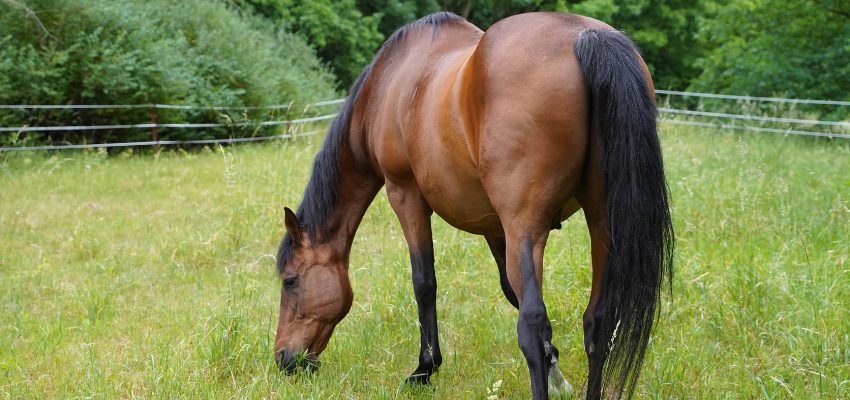
Proper care
Proper care is crucial for the health and well-being of your horse. The Trakehner is an active and energetic horse breed that requires adequate exercise. Keeping them in an open barn with a shelter protected from wind and rain is ideal. The Trakehner is very social and sensitive. Just like all horse breeds, it should have contact with other horses and never be kept alone.
Proper feeding
Trakehners are typically easy keepers and make good use of the feed provided to them.
Ensure you feed a sufficiently large amount of roughage in the form of high-quality hay or haylage. If your horse requires grain, adjust the amount according to your horse’s energy needs. For easy keepers, ample hay and a good mineral supplement often provide all the necessary nutrients. If you are uncertain about feeding, an individualized feeding consultation or guidance from your veterinarian can help.
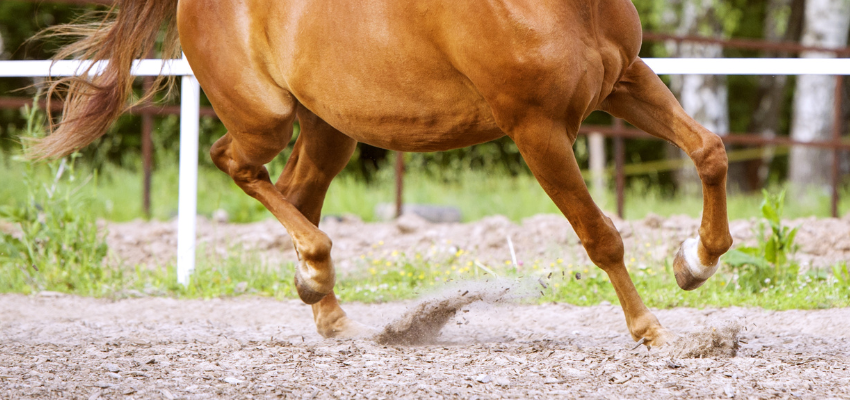
Gaits of the Trakehner
The Trakehner has three basic gaits: walk, trot, and canter. The walk movements are expansive, the trot displays a pronounced floating phase, and the canter is energetic with a beautiful upward movement.
What equestrian disciplines is a Trakehner suitable for?
Thanks to its unique character and temperament, versatility, and willingness to perform, the Trakehner can be found in many equestrian disciplines. Because of its endurance, speed, and robustness, the Trakehner particularly excels in eventing and endurance riding. You can also find the Trakehner in show jumping or carriage driving. Additionally, its elegant and graceful appearance, combined with its beautiful movements, also makes it very popular in dressage. Discover numerous exercises and tips on dressage riding on our website, and let yourself be inspired by our selected trainers.
How much does a Trakehner cost?
The price of a Trakehner can vary depending on lineage, age, training level, and health status. Prices typically range between $10,000 and $25,000.
Our conclusion
The Trakehner has an extremely elegant appearance and is characterized by its intelligent, sensitive, energetic, and courageous nature. This makes it a versatile and reliable partner for many equestrian disciplines, with which you can have a lot of fun.

